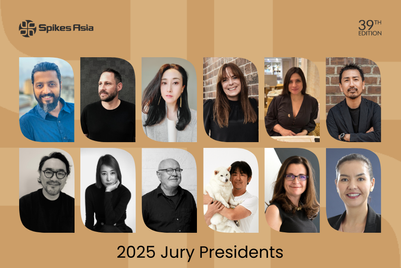
The brand experience and activation category at Spikes Asia 2019 is intended to recognise and celebrate creative, comprehensive brand building through the use of experience design, activations, immersive, retail, and 360-degree customer engagement.
As a judge at Spikes Asia, Lucille Essey, ECD, Greater China at Jack Morton Worldwide, tells Campaign Asia-Pacific about the main trends and patterns she noticed in this year’s colourful entries.
Can you pick out any trends you notice in this year’s entries?
I noticed that some of the most creative, moving and inspiring work came out of the not-for profit/charity category, and it highlights something important to us as creatives. I imagine that in some cases NGOs or the like are partnering with agencies under a pro-bono scheme or they may not have the substantial budgets for projects.
This tends to mean that they are prepared to take more of a creative risk with less control on creative output compared to “ordinary” clients, which leads them to intrinsically trust their agencies more. There is a kind of “we have nothing to lose” spirit about this work and it showed.
There was definitely a sense of freedom around the ideas I saw, and I feel that should be a lesson to us all, that if we trust more and take a risk the rewards can be great. In short, be brave.
What’s the criteria considered in the judging of this category?
For this category, I’m looking for simple, moving, original and effective creative work that extends beyond the product or service it’s selling. The work should give consumers the opportunity to tell their stories.
The most effective creative campaigns have the ability to move and change perceptions and emotionally connect. This doesn’t always mean the newest technology used, or the campaign with the largest budget. It’s really about how one can take the experience to the unexpected.
What are the common media channels for entries in this category?
One thing I was interested to see, particularly since I take care of our Greater China business, is how creatively WeChat was used as part of some activations. The ecosystem is very different to Instagram and/or Facebook and requires a very different approach.
Are many brand experience entries part of larger integrated campaigns?
Yes, definitely. I’ve been in the industry for a very long time and brand experiences have not always been the go-to medium when it comes to campaigns. So this year, I was excited to see more brand experiences being integrated into campaigns. This truly reflects the power of experiences and how they can be used to tell really powerful, personal stories.
This year, a new sub-category is ‘new realities and voice activation’ which includes VR, AR, and mixed reality. Are these becoming more common for brand experiences?
Immersive technology has been transformational for brands and agencies and there has been some interesting work that has come through the use of this tech. There were definitely interesting entries using voice activation this year and I can see the category becoming more and more popular in future years. There is room for development in this category. It’s the newbie and feels as though there is much more territory to explore and it’ll be exciting to see where it goes.
What’s the most exciting thing about being a judge on this category?
I think the most exciting part of the judging process is being able to see the thought process behind all the amazing work by fellow creatives. It’s invigorating to see so much great work coming from APAC. It’s an absolute privilege to be exposed to work from the top creative minds in the industry.




.jpg&h=334&w=500&q=100&v=20250320&c=1)

.jpg&h=334&w=500&q=100&v=20250320&c=1)


.jpg&h=334&w=500&q=100&v=20250320&c=1)

.png&h=334&w=500&q=100&v=20250320&c=1)







